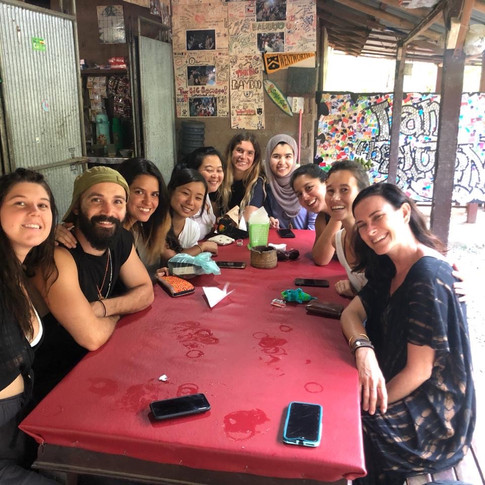I made my permaculture design certificate
- Scarlet Allen
- Nov 8, 2018
- 3 min read
Updated: Jul 18, 2020
Permaculture ist a topic that I've been interested in for a while now. It all started with my discovery of earthships, a method of construction, where only natural and recycled materials are used, grey water is recycled (twice) and the air conditioning comes from the direction of the windows to the sun. From earthships I stumbled over the term permaculture. After spending some time at the library and on Youtube I was hooked. Everything I read just made so much sense and it felt, as if I lived by the permaculture principles my hole life. A year passed by, ideas of new projects were turning in my head, when I decided to get serious and make my permaculture design certificate. And what better place to make it than in Bali at the Kul Kul Farm!
It was a once in a life time experience and it was wonderful to see all the systems I've read about in reality, observe how it works and what can be improved. But the best part was, that I've met a hole bunch of awesome people with the same beliefs and the same attitude towards life and nature.
Permaculture Principles
Observe and interact. By taking the time to engage with nature we can design solutions that suit our particular situation.
Catch and store energy. By developing systems that collect resources when they are abundant, we can use them in times of need.
Obtain a yield. Ensure that you are getting truly useful rewards as part of the work that you are doing.
Apply self-regulation and accept feedback. We need to discourage inappropriate activity to ensure that systems can continue to function well.
Use and value renewable resources and services. Make the best use of nature’s abundance to reduce our consumptive behaviour and dependence on non-renewable resources.
Produce no waste. By valuing and making use of all the resources that are available to us, nothing goes to waste.
Design from patterns to details. By stepping back, we can observe patterns in nature and society. These can form the backbone of our designs, with the details filled in as we go.
Integrate rather than segregate. By putting the right things in the right place, relationships develop between them and they support each other.
Use small and slow solutions. Small and slow systems are easier to maintain than big ones, making better use of local resources and produce more sustainable outcomes.
Use and value diversity. Diversity reduces vulnerability to a variety of threats and takes advantage of the unique nature of the environment in which it resides.
Use edges and value the marginal. The interface between things is where the most interesting events take place. These are often the most valuable, diverse and productive elements in the system.
Creatively use and respond to change. We can have a positive impact on inevitable change by carefully observing, and then intervening at the right time.
Permaculture and Design
As a designer I can use and implement the permaculture principles in all my projects. It helps me to check how meaningful they really are and if I forgot about something important. My favorite part ist the "use small and slow solutions". I was never a big fan of betting everything on one card ("Use and value diversity") and don't feel comfortable making big investments, if I haven't seen systems working properly on a small scale. Also "Design from patterns to details" is a rather good advice for a designer. We've all lost track in a project on some point...




















